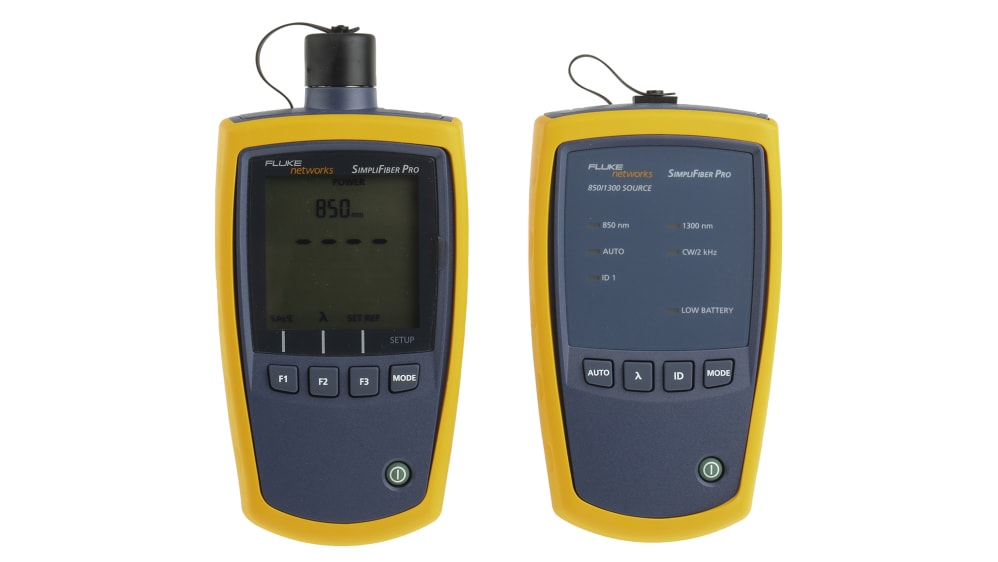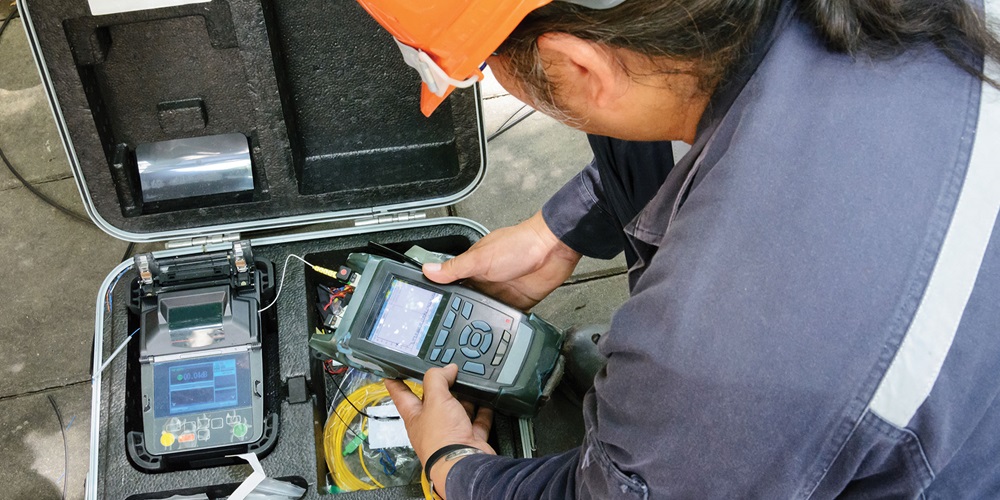Industries depend on fibre testing equipment to ensure product standards.
Industries depend on fibre testing equipment to ensure product standards.
Blog Article
Revealing the Secret Use Optical Fiber Examining for Reliable Data Transmission
In the realm of contemporary communication, optical fibre testing becomes an essential practice for optimizing information transmission. By employing techniques such as Optical Time Domain Name Reflectometry (OTDR) and insertion loss assessments, network drivers can effectively pinpoint and attend to problems that may jeopardize signal integrity. As the demand for faster and extra reliable connections proceeds to climb, the ramifications of these testing methods extend beyond prompt mistake discovery, affecting long-term network efficiency. Recognizing the complex applications of optical fibre testing invites a deeper expedition right into its pivotal duty fit the future of information interaction.

Importance of Optical Fiber Testing
The importance of optical fiber testing can not be overemphasized, as it acts as a vital component in ensuring the integrity and efficiency of information transmission systems. In an age where high-speed interaction is vital, any shortages in fibre optics can result in significant data loss and lowered performance. Consequently, rigorous testing procedures are crucial to confirm the integrity and performance of optical wires.
Examining allows for the identification of defects such as micro-bends, macrobends, and splice losses that can prevent signal top quality. It offers insights right into the total depletion and data transfer capacities of the fiber, making sure that the network satisfies particular operational criteria. Normal screening not only enhances system efficiency yet additionally extends the lifespan of the infrastructure by recognizing possible problems before they rise into costly failures.

Sorts Of Optical Fibre Examinations
Various kinds of optical fiber tests are performed to guarantee the performance and integrity of fibre optic networks. These examinations can be classified into a number of vital types, each offering a specific function in analyzing the stability of the fiber.
First, Optical Time Domain Reflectometry (OTDR) is a famous examination that identifies faults, splices, and adapters within the fiber. By sending pulses of light and assessing the shown signals, specialists can identify concerns along the fiber's length.
Second, insertion loss tests review the quantity of signal loss when light go through ports or splices, which is critical for keeping network efficiency.
Third, return loss tests determine the quantity of light showed back in the direction of the resource, providing insights into the high quality of connections and possible resources of disturbance.
Additionally, continuity tests guarantee that the fibre path is total, enabling service technicians to validate that the fibre is intact without any type of breaks. optical fibre testing equipment.
Last but not least, aesthetic fault locators use visible light to determine breaks or serious bends in the fibre, assisting in quick troubleshooting. Jointly, these examinations develop a detailed method to keeping optimal efficiency in fibre optic networks.

Applications in Network Upkeep
In modern-day telecoms, reliable network upkeep depends heavily on optical fibre screening to recognize and remedy problems quickly. Normal screening makes certain that the network runs at ideal performance degrees, lowering downtime and improving user experience.
Among the key applications of optical fibre testing in upkeep is the detection of mistakes, such as breaks, bends, or improper links. Methods like Optical Time Domain Reflectometry (OTDR) permit service technicians to find these issues properly and analyze the high quality of the fibre web link. Additionally, loss screening confirms the integrity of the optical Your Domain Name course, guaranteeing that signal depletion stays within appropriate restrictions.
Regular maintenance testing also helps in preventive actions, determining possible issues prior to they escalate right into considerable failures. This positive approach can conserve companies both time and funds. Throughout upgrades or expansions, optical fiber screening makes sure that brand-new setups incorporate seamlessly with existing facilities.
Enhancing Information Transmission Reliability
Efficient network upkeep via optical fibre testing not just addresses immediate problems yet also plays a considerable function in boosting information transmission reliability. By determining mistakes, gauging signal loss, and assessing the general problem of fiber optic cables, testing makes sure that possible troubles are rectified before they escalate into considerable interruptions.
Normal optical fibre testing, such as time-domain reflectometry (TDR) and optical time-domain reflectometry (OTDR), enables professionals to pinpoint the exact locations of breaks, bends, or connector issues within the network. This positive technique not only lessens downtime yet also optimizes the performance of information transmission by guaranteeing that the pathways for signals are clear and functioning efficiently.
Moreover, testing help in validating adherence to sector criteria and requirements, which is critical for maintaining the honesty of information circulation. By making sure that each link fulfills called for thresholds for loss and high quality, organizations can strengthen their confidence in the integrity of their information networks.
Ultimately, purchasing comprehensive optical fibre testing not only enhances information transmission reliability yet also supports the long-term functional performance of communication infrastructures.
Future Fads in Fiber Testing
Emerging innovations are poised to transform fiber testing, leading the method for enhanced efficiency and precision in data transmission diagnostics (robotic vision). As the need for faster internet and greater data transfer remains to increase, the integration of innovative tools such as expert system (AI) and device understanding (ML) is readied to change standard fibre screening methods. These modern technologies will make it possible for predictive upkeep and automated fault discovery, considerably lowering downtime and enhancing network integrity
Furthermore, the fostering of Web of Points (IoT) devices will certainly facilitate real-time tracking of fiber networks, allowing for instant recognition of performance problems. This shift in the direction of aggressive management investigate this site will certainly minimize interruptions and maximize information flow.
Moreover, technologies in optical time-domain reflectometry (OTDR) and new testing criteria will improve the precision of dimensions, making certain that data stability is preserved throughout the transmission procedure. The development of 5G modern technology also necessitates the advancement of more sophisticated fibre testing methods to support its redirected here high-speed demands.
Verdict
In conclusion, optical fibre screening is necessary for keeping effective data transmission within communication networks. Normal testing not only guarantees conformity with sector requirements but also promotes aggressive maintenance, eventually contributing to the lasting dependability and performance of fiber optic systems.
Report this page